Engaged Online
Sandra Plazibat has been teaching in the Sixth Belgrade Grammar school for 20 years. She has been investigating and finding new ways to motivate her students all that time. She holds an M.A. and is a Teacher Trainer. She has successfully participated as a speaker at ELTA and RELO conferences and contributed with written articles to professional magazines. Email: plazibat@eunet.rs
Introduction
The title of my article conjures up an image of an engagement ring that links the 4Cs of 21st century learning: communication, creativity, critical thinking, and collaboration. I will try to share with you my experiences of teaching online during the pandemic and I hope you will stay wedded to the ideas in your future work.
First, I should mention that my students are aged 14 to 18. I conducted the activities in the first and third year classes of 30 students each. They generally took up the whole 45 minute lesson, since we needed much time online for some simple things. When teaching face-to-face, the class was divided in two groups and therefore you will see some activities meant for two groups here (but which can be done with the whole class, or multiple groups.)
How to keep your students engaged online?
In order not to let my students ghost during online teaching I tried to make as many interactive activities as possible and keep them engaged at the other end of the line. On the one hand, it was time consuming, but on the other, quite challenging and refreshing. I was tired but happy to have risen to the challenge and received praises for work well-done.
So, I managed to keep them engaged and active while covering:
- VOCABULARY
- GRAMMAR
- DISCUSSION
- RESEARCH WORK
And, now, I would like to cover each item individually
Vocabulary
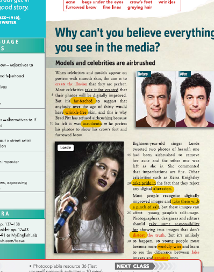
Image - Focus 4.pg.82,Kay,S.,Jones,V.,Brayshaw,D., Trapnell,B. Pearson (2016).
When you need to deal with the new vocabulary it is best to have fun and turn it into a game. My first idea was the crosswords since I know that students love them. I set out to find a website that allows you to build a crossword puzzle that you can share with the class. When you start the search, you will see that there are many, some of them free, some that you have to pay for and yet others that are limited.
I told my students to highlight certain words in the text and then shared my screen on GMeet, which is the official school’s platform. This is what they saw:
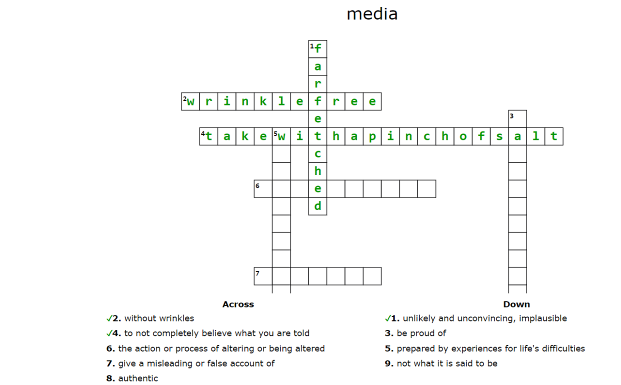
column across and column down with the clues to the highlighted words in the text. This is, unfortunately, not an interactive tool, so they gave me the words and I filled out the spaces with the answers. After finishing the puzzle, I just left the link in the online classroom so they can always open it and study.
The other possibility is that you post the link to the blank puzzle online, tell them to do it beforehand and come prepared for the class. The site also offers the possibility of downloading the puzzle in Word or PDF form, that you can share instead of the link.
Google slides are another option for practicing vocabulary and here is how. Open Google slides and make a list of words in column A and column B that students have to match. You need to make students document editors so they can do the task.
Column A are the words from the text and column B the clues written in text boxes. Why in text boxes? Well, to make the activity interactive they have to do the task and they can’t move the clues in Column B unless they are in the text boxes. This way they can move around the slide.
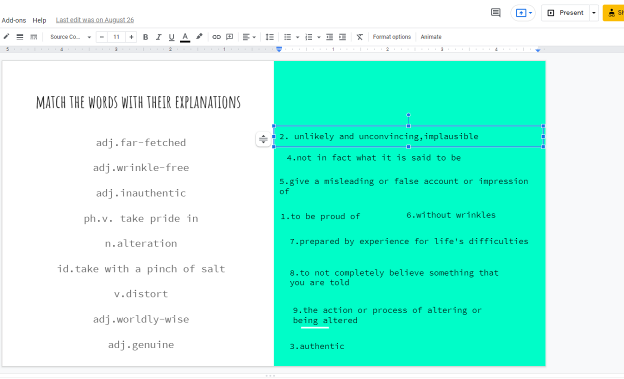
The students found this as interesting as the crosswords and again, they have the access to the slides when you share the link in the classroom.
Grammar
When dealing with grammar I found Google docs and slides most useful. Firstly, you can always leave the link in the online classroom so they can go back to the activity. Secondly, they do the activity in real time and you monitor what they do. And thirdly, there is a trace of what they did and what you, as a teacher, corrected.
In this class, I was covering Reported Speech and the sequence of tenses. You know that it takes time and practice until you get those right and here is what it looked like. We were practicing the translation from one language to the other, with emphasis on the tenses and word order in reported sentences.
Here, I used Google slides with Reported questions where they had to put the words in the correct order again by moving the words across the slide.
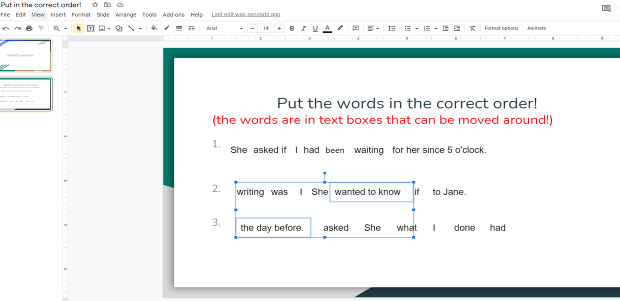
How to have an ONLINE class discussion?
If you remember, I have already mentioned that our classes were split into 2 groups while face-to-face teaching at school. I used this division in online teaching as well, telling one group to go to document 1 and the other to go to document 2. I gave them 10-15 minutes’ preparation time during which they had to write down their arguments one below the other in their document, sign their names and then read the document of the opposite group, so we could later discuss in GMeet together. One group was speaking in favour and the other one against the topic.
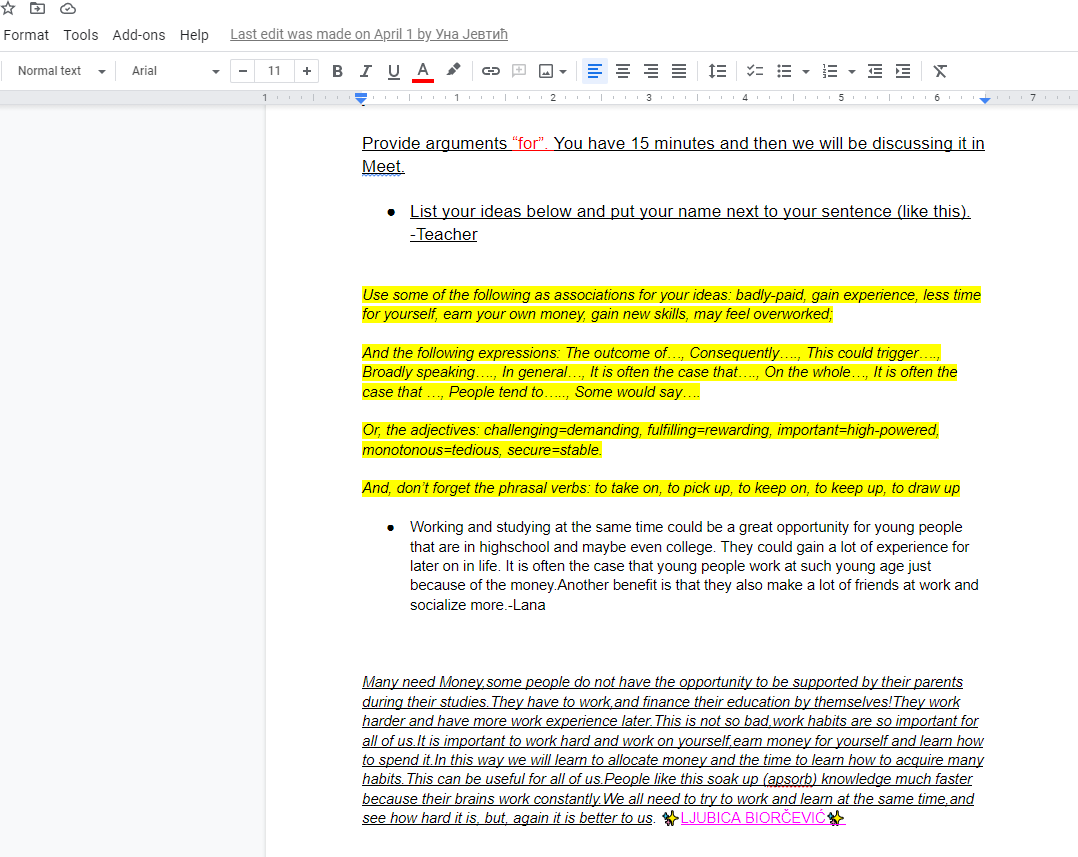
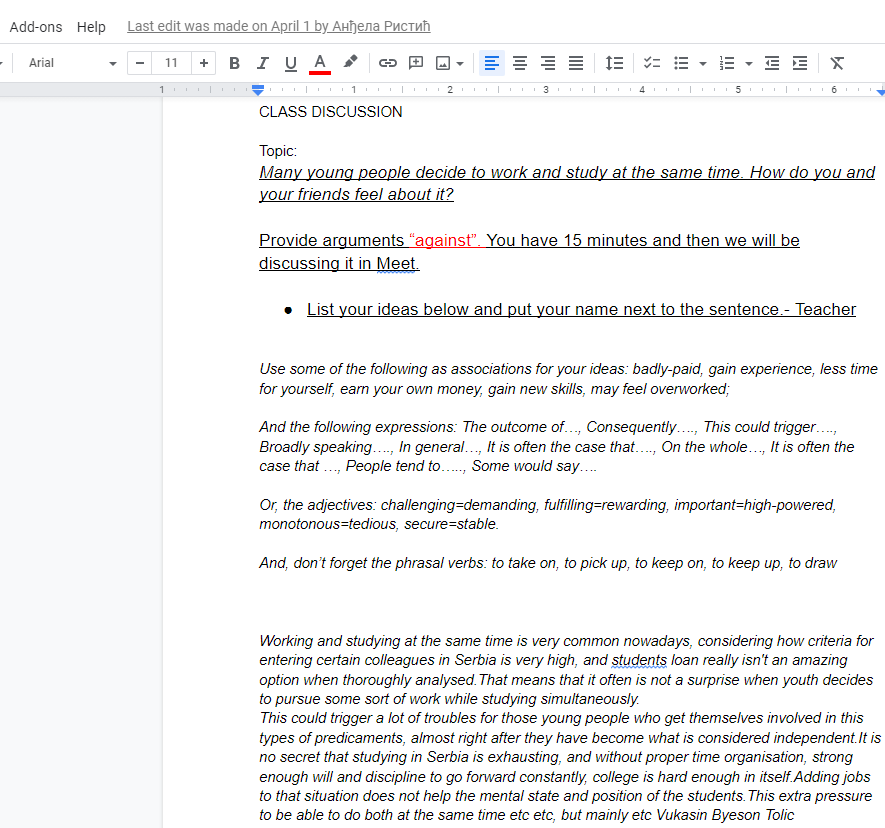
To get what you really want out of this activity, I recommend you add some requirements in respect of the tenses, vocabulary, or whatever you wish to practice. The materials stay in the classroom for some future “for” and “against” essay.
The remaining 30 minutes of the class were “student talking time” when I simply unmuted the student who raised their hand and then the next who wanted to reply. You will later see that these were their favourite online classes.
Research work
After covering a topic, you can always give an assignment for them to do individually. Be this homework or research of some kind, make sure to provide the following:
- clear instructions,
- deadline and,
- schedule a class when you are going to listen to your students presenting ONLINE.
In this case they are the ones sharing the screen and their slides or results of their work. Instruct them to use photos, polls, text or tables, depending on the topic.
If the HW is meant to be checked asynchronously, you can instruct your students to
- use vocaroo.com to record their presentation, and
- insert the link into the slide so you can listen to it at any time!
Our topic at the time was “Street Art” and Banksy, so I gave them an assignment to prepare a “Virtual exhibition”, presenting their favourite piece by Banksy.
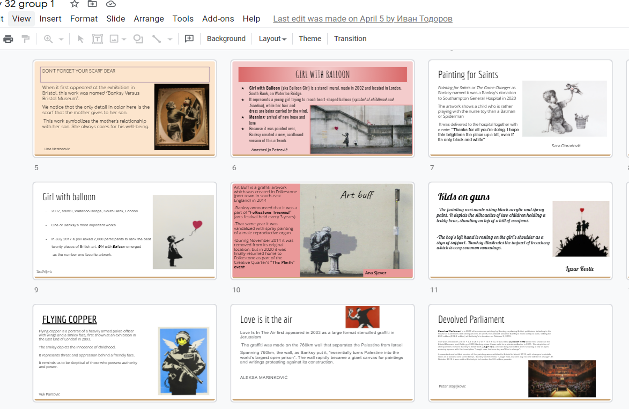
These were Google slides again, but students could have used Padlet, as well.
Here is something extra you will find interesting: my colleagues tell me that it takes a lot of courage to come out and ask your students to grade you. Well, I wouldn’t say I was brave, I was just so very curious to see what they thought of it all.
The results of the survey
Here are the screenshots of the questions I asked and the answers I got in the survey examining my online teaching skills:
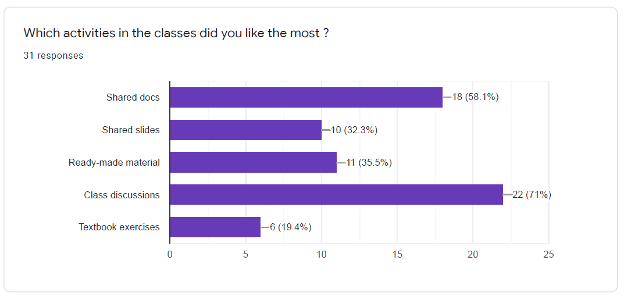
You see, the class discussion is, by far, the most popular activity.
73 percent is quite high and this was what I was aiming at in the first place.
I guess these are the generations born with technology as a way of living.
Yessss!
I take pride in the marks I got.
This was my story about having fun teaching online. I am certain there are teachers out there with many more examples of good practice so I wanted to share my story with you and make contact should you want to.
Please check the Pilgrims f2f courses at Pilgrims website.
Please check the Pilgrims online courses at Pilgrims website.
Teaching English Online: A Degradation of Degrees or a World of New Possibilities
Aleksandra Jankovic, SerbiaEngaged Online
Sandra Plazibat, SerbiaLet`s Jam the Lessons
Jelena Spasic, SerbiaInstagram - A Useful Tool
Zlata Govedarica, SerbiaStudent Engagement in Teaching EAP with Learning Technologies
Vicky Papageorgiou, Greece